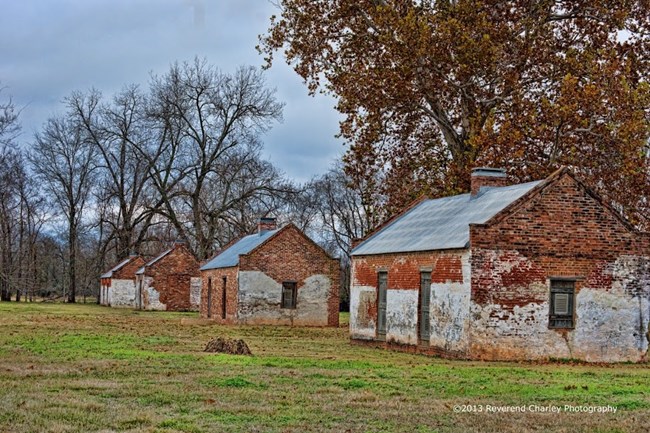Last updated: February 15, 2017
Article
African American History

2013 Reverend Charlie photography
funerals, and occasional church services. At the height of Oakland Plantation (1835-1861) its enslaved people numbered 98-146 individuals. A plantation acted as a small village with everyone having a defined role. Inventories of slaves from 1840-1860 do not reveal the names of all who worked part or full time in the house, shops, gin, and stables of Oakland, but some were identified. For example, Charles was a coach driver for the family. Solomon Wilson, Bob, and Lens were carpenters.Solomon Williams was a blacksmith, Artisans who worked in the shops came in close contact with the field workers and often lived in the quarters and had high status both in the Big House and quarters. Other information about the enslaved can be drawn from the journal of the overseer at Oakland-Seneca Pace. In August of 1860 he noted that ninety slaves picked cotton; he also included some of the amounts picked by certain individuals. After the Civil War the South's economy lay in ruins; plantations, railroads, and levee systems and fragile economic structure could not support the flush times of the antebellum period. With the loss of slavery, people were tied to the land through contracts. Initially contracts were set up for ex-slaves through the Freedman's Bureau to help them gain financial independence through "sharecropping." This system allowed African Americans to work a small plot of land on the plantation with the plantation owner supplying the necessary tools housing and land. At the end of the year both parties would split the proceeds. At Oakland, "sharecropping" began as early as 1868. This system continued throughout the South until the introduction of "mechanization."
Like Oakland, Magnolias workforce included enslaved individuals and later sharecroppers who remained on the land after the Ciivl War. Extensive research has been done about Magnolias workforce population during the antebellum period and throughout the 20th Century. An anlaysis of Ambrose LeComtes slave ledgers provides an insight into an anotomy of an antebellum plantation.
